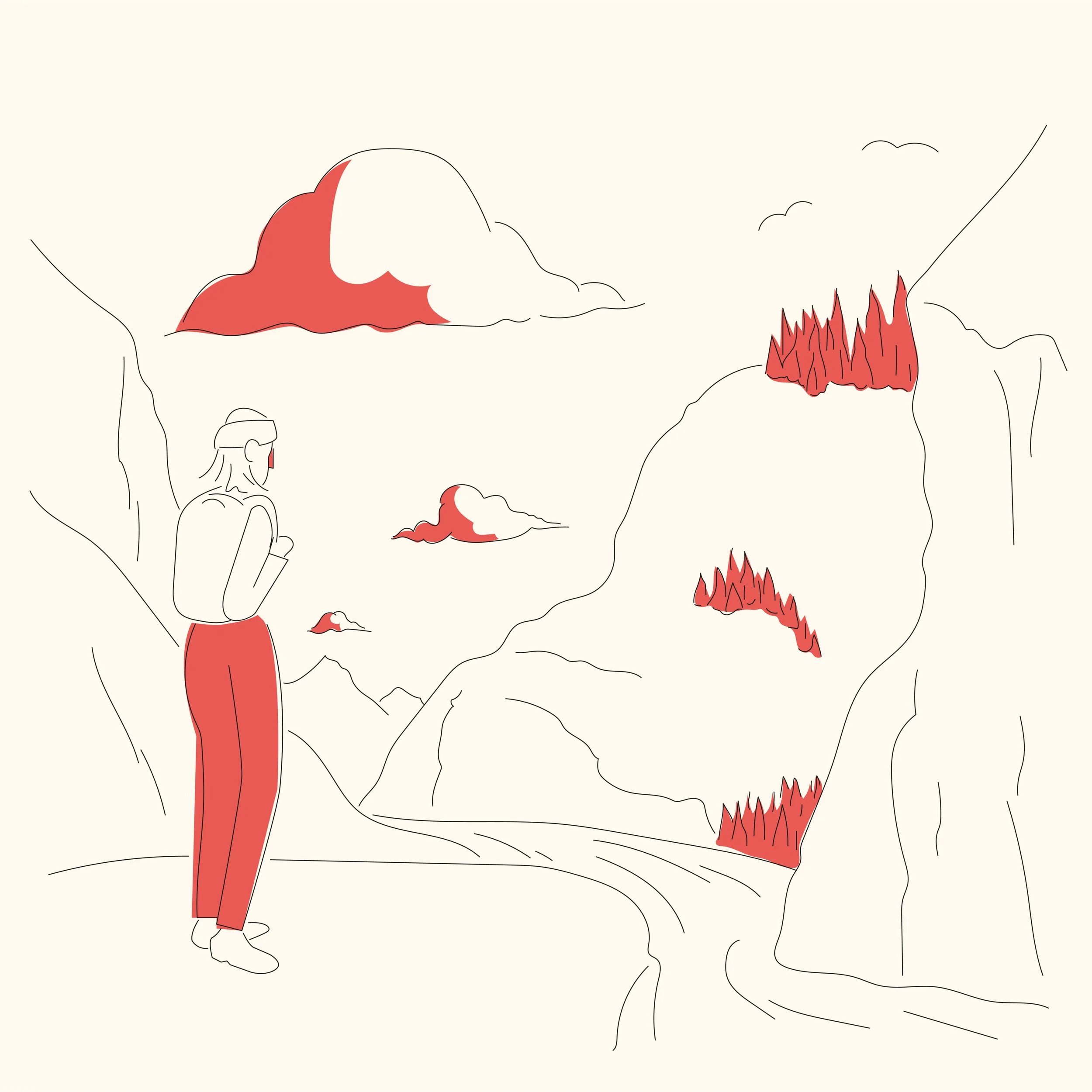How can fashion value Nature? A behind-the-scenes look at the Challenge brief
We recently launched our inaugural challenge – the Fashion Values Challenge. With an open brief asking change-makers ‘how can fashion value Nature?’ with a set of focal lenses including design, media and technology, calling for future-focused ideas that can transform the fashion industry.
But how was this brief created?
The Fashion Values Roundtable, held in January 2021, brought together voices from across the fashion industry – educators, researchers, brands, start-ups, activists and NGOs – to discuss what Nature needs from fashion, and in doing so, co-developed the Challenge brief.
While their input is embedded in the Challenge itself read on for a behind-the-scenes look at the conversations that led to its development.
“We’ve got to reclaim what ‘sustainability’ really is - doing things that are not going to have any detrimental impact but rather positive ones, on and for generations to come.” - Helen Crowley, Kering
What happens when you put sustainability advocates, experts and activists in a (digital) room to focus their collective power on fashion and Nature? Conversations at the Roundtable were challenging and varied, offering perspectives on everything from journalism to consumerism and traditional knowledge. Not only did the conversation help to shape the brief, their insights provide a little extra help for you, as you develop your application.
What did the Roundtable panellists identify as the path towards a more sustainable future?
Three key findings from the conversation included:
Complexity and Communication: The Roundtable experts highlighted the need for new communication strategies for diverse audiences, that constructively engage with complexities of fashion and nature issues.
Connection is necessary to make change happen. It addresses the need for us to empathise, recognise each other, our individual and collective circumstances and the global context in which we exist, as well as the nature being essential for our life. Connection (between fashion and Nature) is also a vital factor in decision-making with regards to materials, supply chains, design and production processes.
Collaboration is key to innovation and systemic progress. The experts in complementary disciplines called for collaboration to educate each other; address complexity together; communicate effectively to diverse audiences; and connect with each other and others.
But how would a transformative idea take these findings into consideration?
Our Roundtable participants had a myriad of suggestions for what the fashion industry needs now, such as…
Sustainability mindsets, cultures and perspectives
Ways to connect people emotionally with their clothes or with Nature
Questioning and addressing sources of valid knowledge
Ways to decolonise fashion
Ways to change fashion mindsets, attitudes or behaviours
Recognition and application of traditional or indigenous knowledge
Ways to affect change across social, cultural, generational, political and geographic boundaries
Think global, act local: ideas with world-wide relevance, but applied regionally
Decoupling fashion from growth
Ways to decouple business growth from emissions and resource extraction growth
Ways to address fashion overproduction
Ways to create fashion without making new products
New knowledge, systems and values
Innovation that presents new perspectives and alternatives to normative systems, behaviours and practices
Ways to leverage technology to help the planet
New values, standards or definitions of success for fashion
Ways to incentivise sustainable decisions and business, based on new values for fashion
Cross-disciplinary partnerships to create change on a systemic level
Consolidating collaborations and priorities for the climate emergency in the next decade
Application of science-based targets for nature and scientific innovation to fashion
This year’s Fashion Values programme is focused on shifting fashion out of the Age of Extraction and into the Age of Regeneration – looking at how we can change our relationship with Nature to be more empathetic, embedded and reciprocal.
Many conversations during the Roundtable event centred on biodiversity, and the need for biodiversity in enabling Nature to flourish. To put it in simple words, biodiversity means ‘living nature’; the living skin across the whole world, including animals, plants, the habitats and ecosystems they live in, and how they interact with each other. Our skin holds us together, enables us to breathe and move, to create and to interact in the world.
“Biodiversity is not only in the Amazon Forest, it can be in central London, it can be in New York, and it’s really all around us. We, as humans, are part of nature, are part of biodiversity.” - Eduardo Escobedo, Responsible Ecosystem Sourcing Problem.
Fashion can help to restore its relationship with Nature is by supporting and restoring biodiversity. While the above suggestions outline possible ways to do so, the panellists offered further insights into the complexity of this topic…
Understanding biodiversity means understanding that we are part of it, are connected to it, and that we collaborate with it when we design and create.
Biodiversity benefits multiple beings in multiple ways. From farmers to local communities to ecosystems to wildlife, biodiversity supports greater resilience to the effects of the climate emergency, and a healthier planet for all that reside here.
Indigenous and traditional knowledge is a vital source for practices of care to support biodiversity. For example, returning land to indigenous caretakers has an overwhelmingly positive effect – see this article from Grist to learn more.
Efforts to address the climate emergency must also address biodiversity. Those that focus on the former without considering the latter are at risk of developing ‘bandaid’ solutions that tackle symptoms rather than causes.
“Fashion practitioners need to understand that we are a part of nature, and that biodiversity is all around us.” - Nina Stevenson, Centre for Sustainable Fashion
“Planting trees and forests as a way to offset emissions… has been quite dangerous because having carbon as a big metric of success for these projects means it’s dangerous for biodiversity.” - Cécile Girardin, Oxford Biodiversity Network, National Based Solutions Initiative
29 June 2021
